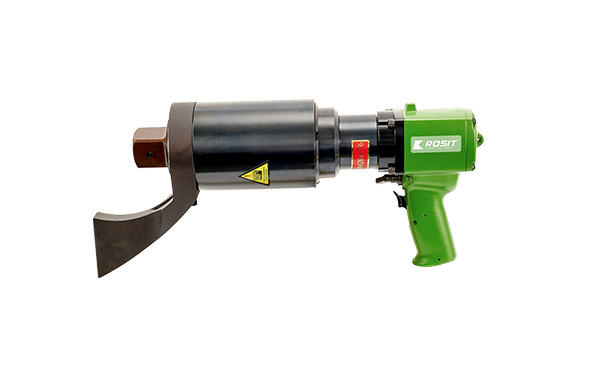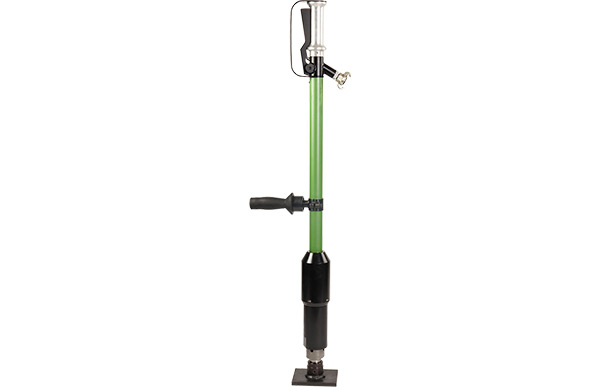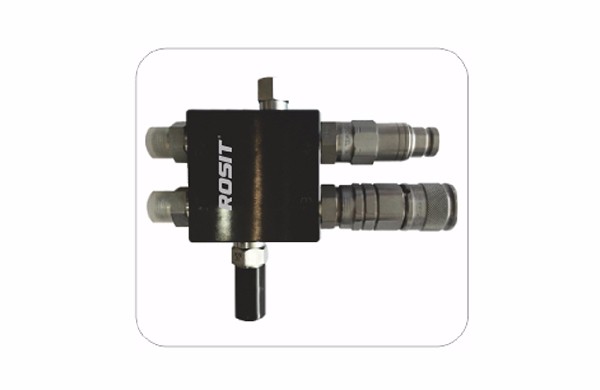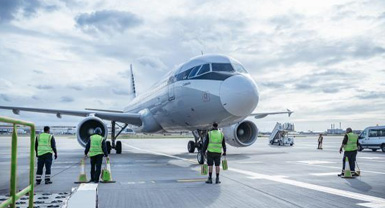- Power Tools
-

Saws
Chain Saw Concrete Chain Saw Band Saw Reciprocating Saw ...
-

Cutters
Pneumatic Cutter Pipe Cutting Machine Nut Cutter
-

Drills
Hammer Drill Pistol Hammer Drill Two Hand Operation Drill Column Drill ...
-

Impact Wrenches
Pneumatic Impact Wrench (Ex-proof Series) Pneumatic Impact Wrench (Ultra light Series) Emulsion Impact Wrench Nut Runner ...
-

Torque Wrenches
Pneumatic Torque Wrench Electric Torque Wrench Hydraulic Torque Wrench Hollow Hydraulic Wrench ...
-

Mining Waterjet Cutting Machine
Electric Mining Waterjet Cutting Machine Pneumatic Mining Waterjet Cutting Machine Emulsion Mining Waterjet Cutting Machine
-

Hammers
Pneumatic Chipping Hammer Hydraulic Chipping Hammer
-

Scaler
Pneumatic Long Reach Scaler
-

Rammer
Pneumatic Rammer
-

Grinders
Wet Grinder Angel Grinder Electric Grinder
-

Fan
Pneumatic Fan Heavy Fixed Fan
-

Hoist
Chain Hoist Electric Hoist Pneumatic Hoist Hydraulic Hoist ...
-

Winch
Pneumatic Winch
-

Pump
Pneumatic Submersible Pump Emulsion Submersible Pump
-

Assembly
Torque Multipler C-Hog Ring Plier
-
- Accessories
-

Cutting
Chainsaw Concrete Chainsaw Band Saw Reciprocating Saw ...
-

Drilling
Impact Drills Light Drills Magnetic Drills丨Rail Drills Balance Drills丨Angle Drills ...
-

Assembly
Impact Wrenches C-Hog Ring Plier
-

Hammer & Shovel
Chipping Hammer Derusting Shovel
-

Grinding
Grinders
-

Hydraulic Accessories
Nut Runner Cutter
-

General Accessories
Waterjet Cutting Machine Filter assy. Filter assy. Water Pump ...
-
- Company Profile
- Service
- News
-

Events
The 21st 2023 Taiyuan Coal (En The 17th Yulin International C The 20th TaiYuan (2021) Coal ( The 16th Ordors International Have a machine repaired or hav ...
-

Case Study
Specifications of adjustable w Have a machine repaired or hav
-

Industry News
Using Chainsaws to Cut Snow? What to do if the pneumatic wr Hydraulic chain saw Operation of the wrench Introduction to the principle ...
-
- Download
- Contact
Analysis and solution of the easy-to-appear problem of hydraulic equipment!Air circular saw company
source:Industry News release time:2021-10-08 Article author:Rosit Popular:Air band saw
Analysis and solution of the easy-to-appear problem of hydraulic equipment
1 Bucket-wheel stacker-reclaimer tail car hydraulic system structure and operating principle The working principle of the bucket-wheel stacker-reclaimer tail car hydraulic system is shown in the figure. Through the (tōng guò) gear pump oil supply, the hydraulic cylinder (plunger cylinder) slides in the frame sliding track to lift the conveyor beam supported by the lifting spindle. Failure analysis and treatment of the hydraulic system of the tail car of the bucket wheel stacker and reclaimer (chǔ lǐ) 2 Main failures of the hydraulic system (1) There are crawling and high-frequency (Induction Heating) vibrations when the hydraulic cylinder is working.

(2) The hydraulic cylinder is unstable, moving and not moving at all times. The hydraulic wrench transmits power to the working head through the high-pressure oil pipe and the hydraulic pump, which drives the working head to tighten or loosen the nut. The hydraulic pump can be driven by electricity or compressed air. The working head of the hydraulic wrench is mainly composed of three parts, the frame (also called the shell), the oil cylinder and the transmission parts. The output force of the oil cylinder, the piston rod of the oil cylinder and the transmission part form a motion pair. The distance from the center of the oil cylinder to the center of the transmission component is the hydraulic wrench amplification arm. The oil cylinder output multiplied by the arm is the theoretical output torque of the hydraulic wrench. The actual output torque is smaller than the theoretical output torque.
(3) The gear pump is noisy when it is working.
(4) The belt conveyor supported by the tail car lifting spindle falls naturally, and the falling speed of its own weight is too large.
3 Failure cause analysis and treatment (chǔ lǐ) 3.1 The oil pipeline, the oil pump and the actuator are not exhausted normally (1) When the oil pump is started for oil circulation, all the air trapped in the main circuit pipeline will be discharged, but it will remain in the oil circuit The air in the impassable branch pipe is difficult to discharge. Even if the amount of air is small, the pulse pressure of the oil pump is often amplified, causing the oil pump and motor to make noise. This phenomenon is easy to appear on the hydraulic pipeline just after disassembly and overhaul. At this time, the oil pump can be started, the various actuators in the circuit can be rotated, and the oil in the circuit can be circulated for 5-10 minutes to release the air trapped in the pipeline. You can also slightly loosen the pipes that tend to trap air, and turn the oil pump to deflate. Because air often stays in the upper part, attention must be paid to the position where the working oil cannot circulate in the upper part.
(2) When the position of the oil pump is higher than the surface of the oil tank, the air in the oil pump is most likely to be trapped (paraphrase: stay still). At this time, the oil pump not only does not pump oil, but also easily burns out. This requires filling the oil pump and pipeline with oil before starting operation.
3.2 Improper use of working oil (1) Too little working oil in the oil tank and too low liquid level will cause the pump to fail to deliver oil. At this time, it is necessary to add working oil according to the requirements (guī dìng).
If the amount of oil in the closed oil tank is too much, the oil level will fluctuate up and down with the expansion and contraction of the hydraulic cylinder (extension and retraction metaphorically change within a certain limit), causing the oil cylinder to seal (interpret the sealing principle of the skeleton oil seal and Application), valve core (subordinate to the valve body) seal leakage and fuel tank expansion and deformation. At this time, the working oil needs to be drained to the specified (guī dìng) oil level.
(2) If the viscosity of the working oil is high, the oil pump will not be able to discharge oil at low temperatures, or the oil temperature will increase due to the increase in flow resistance, and the noise (dB) of the oil pump will also increase. If the defoaming performance of the working oil is poor, the working oil will be deteriorated or the oil temperature will be increased due to the adiabatic compression of the air bubbles, so that the viscosity of the working oil will decrease and the lubrication effect will be deteriorated, thereby accelerating the wear of the sliding parts of the hydraulic components (parts) A basic type of failure). The low viscosity of the working oil will increase the leakage of the valve gap.
If the dust in the working oil enters the gap of the valve, the valve cannot operate. The water in the working oil can easily cause cavitation of hydraulic components and reduce the lubricating performance of the oil. Therefore, it is necessary to select the appropriate working oil according to the requirements, such as using thick 30-1 thickened hydraulic oil in winter, and thick 90-1 thickened hydraulic oil in summer, and strengthen the operation and maintenance of the oil system.
(3) Air leaks into the working oil, which increases air bubbles and easily leads to an increase in system failure rate. When the working oil contains fine air bubbles, the system noise will increase. At the same time, the air bubbles hinder heat dissipation and generate heat due to adiabatic compression, which will increase the oil temperature and cause system failures. At this time, working oil with good defoaming properties can be used, and at the same time, check whether the oil pump shaft seal and the oil hose clamp are loose, and deal with it.
3.3 The relief valve, one-way valve, solenoid valve and other components are not working properly (1) The pressure set by the relief valve is reduced or the spring pressure is reduced, then the safety pressure needs to be re-adjusted. If the safety pressure cannot be adjusted due to dust entering the valve or the spring is broken, the valve must be disassembled and cleaned or the spring must be replaced.
(2) The spool of the one-way valve (attached to the valve body) or the control piston (piston) is stuck or stuck too tightly or stuck, causing the buffering effect to be too large, and the valve parts need to be replaced.
(3) When the solenoid winding of the solenoid valve is burned out, and the valve core is stuck due to the dust entering the valve, and the spring force cannot return to the neutral position, the solenoid valve needs to be disassembled and cleaned. If the solenoid valve core gap is large, the solenoid valve parts need to be replaced. If necessary, a solenoid valve with a small gap can be used, but attention must be paid to prevent dust from entering the working oil.
4 Conclusion The hydraulic system is a complex electro-hydraulic integrated system. Due to the complexity of the system structure and working principle, once a fault occurs, it is often difficult to quickly and accurately determine the source of the fault. Statistics show that in the maintenance process of complex systems (products), fault detection and diagnosis (diagnosis) account for 60% to 90% of the workload. There are many reasons for the failure of the hydraulic system, so it is necessary to comprehensively consider the failure and analyze it in detail (Analyse). As long as we can conscientiously summarize and adopt various advanced hydraulic fault diagnosis and status detection technologies, we can correctly and timely remove various faults or prevent problems before they occur, and ensure the reliability of the system.
Read recommendations:
AK22-110 Pneumatic C-Hog Ring Plier (2.0 coil)
Principle and scope of use of hydraulic wrench.Air hoist Wholesale
related articles
Using Chainsaws to Cut Snow?
2024-05-21What to do if the pneumatic wrench is weak
2022-12-19Hydraulic chain saw
2022-12-13Operation of the wrench
2022-12-06Introduction to the principle of pneumatic wrench
2022-11-28How to use the pneumatic wrench
2022-11-21Brief introduction to the principle of pneumatic wrench
2022-11-14Impact pneumatic wrench
2022-11-07Correct hydraulic wrench operation procedure
2022-11-01Hydraulic wrench torque pressure conversion
2022-11-01Field operation procedure of hydraulic wrench
2022-10-24Hydraulic radial plunger motor
2022-10-17The history of hydraulic motors
2022-10-17Principle of balance hydraulic wrench
2022-10-10The Price Factor of Smart Electric Torque Wrench
2022-10-10Introduction to the advantages of using intelligent electric torque wrench
2022-10-10The Price Factor of Smart Electric Torque Wrench
2022-10-10Classification and use of wrenches
2022-10-10hydraulic wrench pressure conversion
2022-10-10Introduction to the advantages of the use of intelligent electric torque wrench
2022-10-10Smart Electric Torque Wrench Selection Guide
2022-10-10Intelligent electric torque wrench for wind power generation
2022-10-09Uses of open-end wrenches.Pneumatic chainsaw
2022-10-08What are the driving parts of a hydraulic wrench and what they do
2022-09-30What are the driving parts of a hydraulic wrench and what they do
2022-09-23the commonly used wrenches
2022-09-22Introduction of several common wrenches
2022-09-21Application scope and daily maintenance method of hydraulic bolt tensioner
2022-09-20Characteristics of hollow hydraulic wrench and precautions for use
2022-09-19Characteristics and precautions of driving hydraulic wrench
2022-09-17Power Tools
CN22-4150 Nut Cutter丨Split-type Nut Cutter
2023-06-17CB22-160 Pneumatic Band Saw - Stainless Steel Series
2023-06-16DA31-032 Hydraulic Angle Drill
2022-12-15AN71-5500 Torque Multiplier
2023-06-29LH21 Series Pneumatic Hoist
2023-05-11AN22-2500 Pneumatic Torque Wrench (Straight Shaft)
2023-06-27CB22-310 Pneumatic Band Saw - Stainless Steel Series
2023-06-16OW65-020 Split Emulsion Type Mining Waterjet Cutting Machine
2023-05-10RH21-1450 Pneumatic Chipping Hammer
2021-06-16RC21-1800 Pneumatic Long Reach Scalers
2023-06-27OF23-520 Pneumatic Fan (light/medium)
2022-12-29CB11-120 Electric Band Saw
2020-06-13CR21-008 Light Pneumatic Reciprocating Saw
2020-06-13CC23-430 Pneumatic Chainsaw Heavy-Duty (3.5KW Series)
2023-06-14AN51-1600 Electric servo CNC Torque Wrench
2023-06-27CC20-630 Pneumatic Chainsaw (3.0 kw Series)
2023-06-14AN11-3000 Electric servo CNC Torque Wrench
2023-06-27AW22-4000 Pneumatic Impact Wrench (Ultra-Light Series)
2021-06-15LH22-005 Pneumatic Hoist
2023-06-29GG21-178 Pneumatic Angel Grinder
2020-06-13DC11-300 Electric Core Drill
2023-06-20CS22-180 Pneumatic Trolley Circular Saw
2021-06-08AN71-3500 Torque Multiplier
2023-06-29LW21-005 Pneumatic Winch
2023-01-06GG21-050 Pneumatic Angle Grinder
2022-12-28RH31-1550 Hydraulic Chipping Hammer
2023-06-27CF21-018 Pneumatic Cutter
2023-06-17DM22-030 Pneumatic Rail Drill
2023-06-19RH31-1000 Hydraulic Chipping Hammer
2023-06-27AN71-10000 Torque Multiplier
2023-06-29Accessories
Carborundum saw Blades
2023-06-06Alloy Drill Bits丨812 Series
2023-06-06Diamond Saw Chains丨CC813 Series
2023-06-06Alloy Saw Blades
2023-06-06Carbide Hollow Bits丨DM816 Series
2023-06-06Hydraulic Pump Station
2023-06-07Alloy Drill Bits丨813 Series
2023-06-06Rail Clamps丨CB864-12
2023-06-06Cross Clamps丨CB862-22
2023-06-06Hydraulic Regulating Valve
2023-06-07Alloy Saw Blades丨CR812 Series
2023-06-06Sleeve KIT
2023-06-07Diamond Saw Blades
2023-06-06Tool Bits
2023-06-07Pipe Fixed Clamps丨CB861-12
2023-06-06Alloy Saw Chains丨CC812/CC816 Series
2023-06-06Hard Alloy Hollow Drill Bits assy.丨DB85 Series
2023-06-07Clamps
2023-06-06Optional Accessories
2023-06-07Platform Clamps丨CB863-19
2023-06-06Tool Bits
2023-06-07Alloy Saw Blades
2023-06-06Carbide Hollow Rail Drill Bits丨DM822 Series
2023-06-06Regular Saw Chains丨CC811 Series
2023-06-06Chisels
2023-06-07Alloy Saw Blades丨CR811-150/152
2023-06-06Ex-proof Sleeves
2023-06-07Alloy Twist Drill Bits
2023-06-06Alloy Saw Blades丨CR816 Series
2023-06-06Shovel Blades
2023-06-07

















 You are here: >
You are here: >



